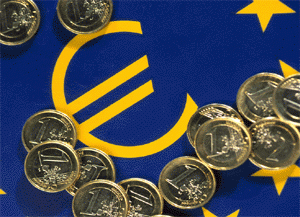
By Mike Jones
The NZD picked itself up off the mat last night. A generalised recovery in risk appetite saw NZD/USD surge nearly 2 cents to 0.6850.
Market sentiment was cheered by an apparent stabilisation in Europe’s sovereign debt crisis and the EUR. The steady stream of bad news on this front has slowed to more of a trickle. Indeed, Portugal announced a further €15b of austerity measures to reign in its budget deficit and both China and Kuwait rejected speculation they are cutting investments in the Eurozone.
As a result, EUR/USD surged above 1.2350 from around 1.2200, setting the scene for a broad-based decline in the USD.
Despite some fairly lacklustre US data (Q1 GDP was revised down to an annualised 3.0%), global equity markets chalked up gains of 2.5-3.5%. Meantime, easing fears about the strength of global demand saw commodity prices claw back some of their recent losses. The CRB commodity price index rose around 2% while oil prices jumped over 4%, to be up about 6.5% for the week.
All in all, it was the perfect backdrop for ‘growth-sensitive’ currencies like the NZD to launch a recovery. Our risk appetite index (which has a scale of 0-100%) increased nearly 4% to 38%. And with investors becoming less risk averse, “safe-haven” positions in USD and JPY were pared back. NZD/JPY rose nearly 3.5% and NZD/USD climbed from 0.6650 to above 0.6800.
We expect to see a continuation in the broadly improving trend from today’s building permits data for April. In contrast, it’s hard to envisage any marked improvement in the April credit aggregates.
The near-term fortunes of the NZD though, will remain in the hands of offshore investors’ appetite for risk. Should upcoming data continue to restore optimism about the global recovery, we’d expect further recovery in risk appetite to underpin ‘growth-sensitive’ currencies like the NZD. Our short-term valuation model suggests NZD/USD is “fairly-valued” between 0.7000-0.7200.
Majors
The USD weakened against nearly all of the major currencies overnight.
A recovery in the EUR was the major focus for currency markets overnight. Sentiment towards the EUR began to improve after China denied yesterday’s FT report it was reducing its Eurozone investments in light of the sovereign debt crisis. Central banks in Kuwait and South Korea also confirmed they have no plans to cut EUR holdings just yet.
A lack of any further ‘bad’ news in European sovereign debt markets also helped EUR sentiment stabilise. In fact, the Spanish parliament approved (just) its €15b austerity package, adding to hopes European countries will be able to reign in their budget deficits. The Spanish 5-year CDS spread (a proxy for default probability) eased from 240bps to 234bps.
EUR/USD bounced from 1.2200 to above 1.2350. And with the EUR increasingly acting as a barometer for risk appetite, this paved the way for solid gains in equity markets and a broad-based decline in the USD. European equities rose 3.0-3.5% and the S&P500 is currently up around 2.9%. The VIX index (Wall St’s so-called “fear gauge”) plunged to around 30% from 35% – the lowest in about a week and a half.
Against a backdrop of surging equities and easing fears about the global recovery, “growth-sensitive” currencies like AUD, CAD and NZD outperformed. A sharp recovery in commodity prices added support. Oil prices surged over 4% last night to be up almost 11% over the past 3 days (albeit still 13% below their May peak). CAD/USD dropped below 1.050 from 1.070 and AUD/USD jumped nearly 3 cents to 0.8500.
On balance, last night’s US data was a touch weaker than analyst expectations, but this did little to dampen markets’ optimistic mood. March quarter GDP was revised down to 3.0% from 3.2% (3.4% expected) and May 22 jobless claims fell by slightly less than expected (460,000 vs. 455,000 expected).
It was a wild sort of night for GBP. Rumours Prudential’s US$36b bid for AIG’s Asian unit was off the table lit a rocket under GBP/USD (as this would involve unwinding previous USD purchases), only for the gains to be reversed later on as the rumours were quashed. Still, the broadly softer USD helped GBP/USD end the night close to 2-week highs around 1.4600.
Looking ahead, easing risk aversion and reduced “safe-haven” demand is expected to limit near-term gains in the USD. We suspect rallies in the USD index will be capped by resistance around 87.10 in the short-term. As such, EUR/USD should find support on any dips towards 1.2150.
*Mike Jones is a BNZ currency strategist.
No chart with that title exists.
We welcome your comments below. If you are not already registered, please register to comment.
Remember we welcome robust, respectful and insightful debate. We don't welcome abusive or defamatory comments and will de-register those repeatedly making such comments. Our current comment policy is here.